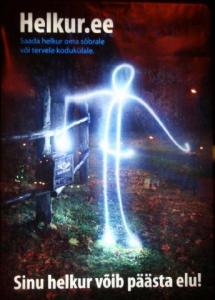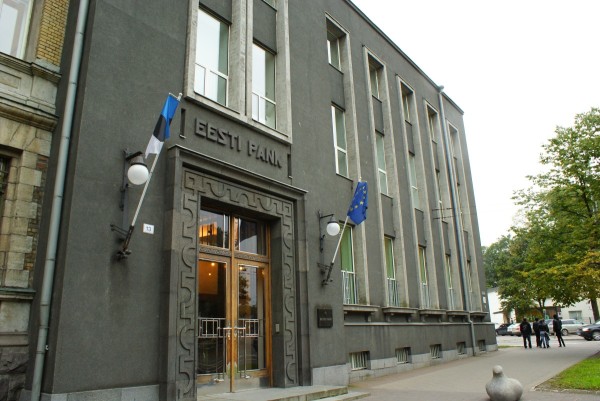The days are slowly getting longer. One small rooster-step at a time, kukesammu võrra, as per the saying. On Jan. 21 Tallinn will enjoy 7h 15m 22s of daylight (tõuseb / rises 8.55, loojub / sets 16.10) compared to 9h 29m 05s in Toronto (7.44 to 17.13 in Estonian time notation). Sun-times are marked in most Estonian calendars and date books, for although we don't see päike, the great burning star, as often as we'd like during the winter months, we like to keep track of her progress. And our progress is swifter. While you are progressively getting 3 more seconds of light a day, our leaps amount to 5 to 6 seconds a day and we will soon shoot past you to the opposite extreme.
Darkness and people dressed in dark are an issue here between 58 and 59 degrees north latitude. That corresponds to where the Canadian prairie provinces meet the Northwest Territories. Whitehorse, Yukon and Helsinki are 60 degrees north, whilst Toronto is on line with Florence, Italy on the 43rd parallel. In case you were wondering.
Helkur-awareness was quick to arrive from Estonia's neighbours to the N and NW, but there are still numerous senseless accidents and deaths each winter involving hard to see pedestrians (jalakäijad) and vehicles. And so the public awareness campaigns continue, brought to you by the liiklusohutus (traffic safety) people at the Maanteeamet or Estonian Road Administration. Tee = road, maantee = highway and kiirtee (literally "fast road") = freeway or express highway, which Estonians only encounter abroad.
Children's winter jackets and snowsuits come adorned with strips of reflective material, but in order to counter the idea that helkurid are only for children, new varieties have been introduced, including those in the form of arm and leg hugging bands. Helkurid provide a good surface on which to advertise and have even become subtle fashion statements, acquiring many interesting designs, colours, shapes and characters (glorified pendants). But beware of libahelkurid – (the prefix liba = fake), wanna-bes made of material which does not reflect well enough! Helkurid must be seen by a driver from a distance of at least 130-150 metres in order to have sufficient time to brake and ideally seen from as many angles as possible.
Official helkur protocol states the least (and optimal) life-saving sparkle a pedestrian in Estonia should don is a light-coloured reflector (ideally certified), made from hard plastic and measuring ca 5 cm across hanging on the right side of one's outerwear at approx. 40-60 cm from the ground (the height of car headlights) on a 10-20 cm string, so it spins and twirls. A second reflector on the left side is a additional investment.
For someone in a well-lit big city with fair weather this might sound excessive and silly, but on a winter's night in rural Estonia, experience has it that it's worth making those you care about sparkle – "Pane need, kellest hoolid, pimedal ajal särama!" in order to be there for the ones you love – "Ole oma lähedaste jaoks olemas." Not something to take lightly.

TÄNAVALT (From the street)
Eestlased Eestis | 21 Jan 2011 | Eesti Elu
Eestlased Eestis
TRENDING

























